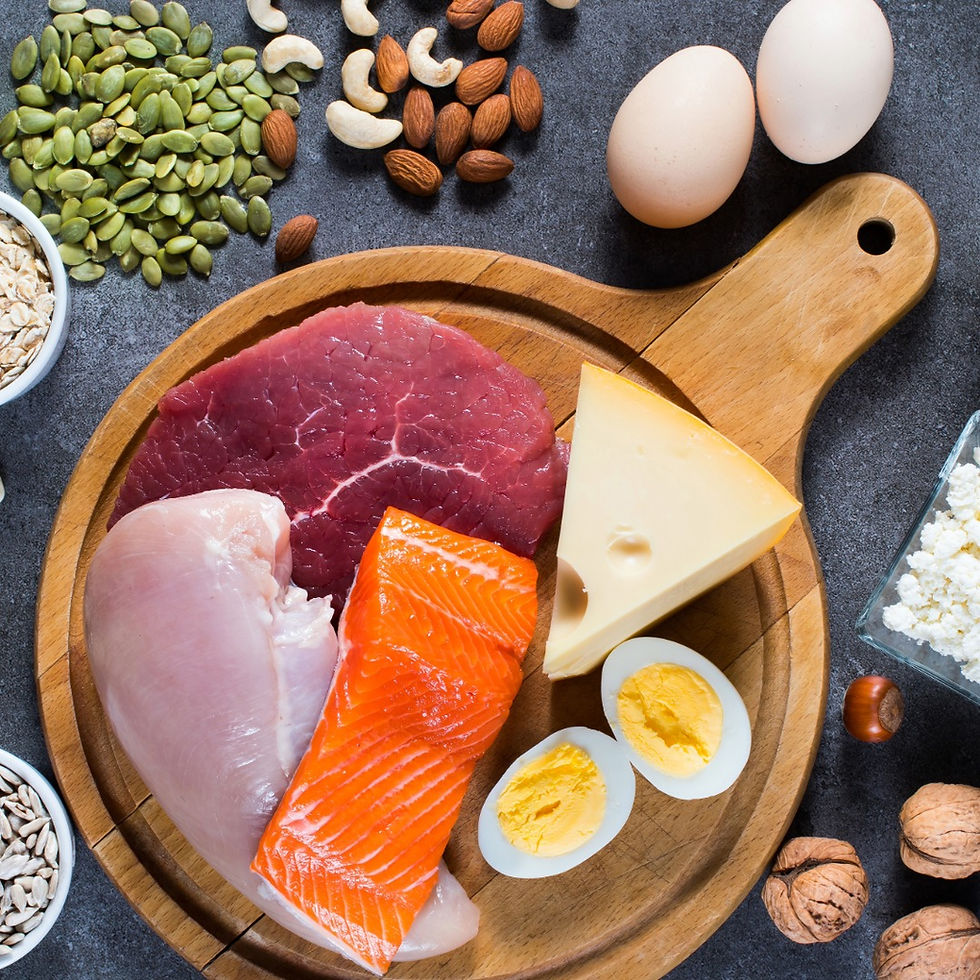Cryotherapy: Injury Prevention
- packanimalfit
- Jun 13, 2023
- 3 min read
Matt Siekbert, owner of Pack Animal Fitness gym in Saint Petersburg, Florida, is often asked about the most effective strategies for injury prevention in weightlifting and bodybuilding. As an expert in the field, Matt understands the importance of maintaining a well-rounded approach to training, which includes incorporating various techniques and practices to minimize the risk of injuries. One such technique that has gained popularity in recent years is cryotherapy. In this article, we will delve into the role of cryotherapy in preventing injuries in weightlifting and bodybuilding, and explore its potential benefits in managing chronic conditions such as tendinitis or arthritis.
Cryotherapy, which involves the use of extreme cold temperatures for therapeutic purposes, has been widely utilized in the medical field for decades. In recent years, its applications have expanded to include sports recovery and injury prevention. Cryotherapy can take different forms, including whole-body cryotherapy (WBC) and localized cryotherapy. WBC involves exposing the entire body to extremely low temperatures, typically in a cryotherapy chamber, for a short duration, while localized cryotherapy targets specific areas of the body using various cryotherapy techniques.
One of the primary benefits of cryotherapy in injury prevention is its ability to reduce the risk of overuse injuries. Weightlifting and bodybuilding often involve repetitive motions and high-intensity training, which can put significant stress on the joints, muscles, and tendons. Over time, this repetitive stress can lead to overuse injuries such as tendinitis or bursitis. Cryotherapy helps to counteract this by decreasing inflammation and swelling in the affected areas, promoting faster recovery, and reducing the risk of further damage.
Moreover, cryotherapy can be particularly beneficial in preventing joint damage. Weightlifting and bodybuilding exercises, especially those involving heavy loads, can put significant strain on the joints, potentially leading to joint inflammation and deterioration over time. By subjecting the body to extreme cold temperatures, cryotherapy constricts blood vessels and reduces blood flow to the joints, which helps to alleviate inflammation and prevent further damage. Additionally, cryotherapy triggers the release of endorphins, which act as natural painkillers and provide pain relief for individuals suffering from joint discomfort.
Muscle strains are another common concern for weightlifters and bodybuilders. These strains can occur due to sudden movements, inadequate warm-up, or muscular imbalances. Cryotherapy can play a vital role in preventing muscle strains by reducing muscle spasms, alleviating muscle soreness, and improving overall muscle recovery. The extreme cold temperature causes vasoconstriction, which limits the blood flow to the muscles, reducing swelling and inflammation. Furthermore, cryotherapy stimulates the production of collagen, a protein essential for maintaining healthy muscles and tendons, thus enhancing their resilience and reducing the risk of strains.
Beyond injury prevention, cryotherapy has shown promising results in managing chronic conditions such as tendinitis or arthritis. Tendinitis, characterized by the inflammation of tendons, is a common ailment among weightlifters and bodybuilders due to repetitive motions and high-intensity training. By reducing inflammation and promoting tissue repair, cryotherapy can provide relief for individuals suffering from tendinitis. Similarly, individuals with arthritis, which is characterized by joint inflammation and stiffness, may benefit from cryotherapy as it helps to alleviate pain, increase joint mobility, and improve overall quality of life.
While cryotherapy offers several potential benefits in injury prevention and management of chronic conditions, it is important to note that it should not be considered a standalone solution. It is best used as part of a comprehensive approach to training, which includes proper warm-up, cool-down, stretching, and a well-balanced exercise program. Additionally, it is crucial to consult with a qualified fitness professional and a healthcare provider before incorporating cryotherapy into your routine, especially if you have any underlying medical conditions or concerns.
In conclusion, cryotherapy can play a significant role in preventing injuries in weightlifting and bodybuilding. Its ability to reduce the risk of overuse injuries, joint damage, and muscle strains makes it an attractive option for athletes and fitness enthusiasts. Furthermore, cryotherapy shows promise in managing chronic conditions such as tendinitis or arthritis, providing relief and improving overall well-being. However, it is essential to approach cryotherapy as part of a comprehensive training program and seek professional advice before incorporating it into your routine. Remember, we are Stronger in Packs, unleash your fitness potential at Pack Animal Fitness! Visit us online at https://www.packanimalfit.com/ or come back and take a tour of our great gym at 5985 49th S N, Saint Petersburg, FL 33709.
Disclaimer: The content provided in this article is for informational purposes only. Always consult with a qualified fitness professional and your doctor before starting any exercise program or making significant changes to your training or nutrition regimen.





